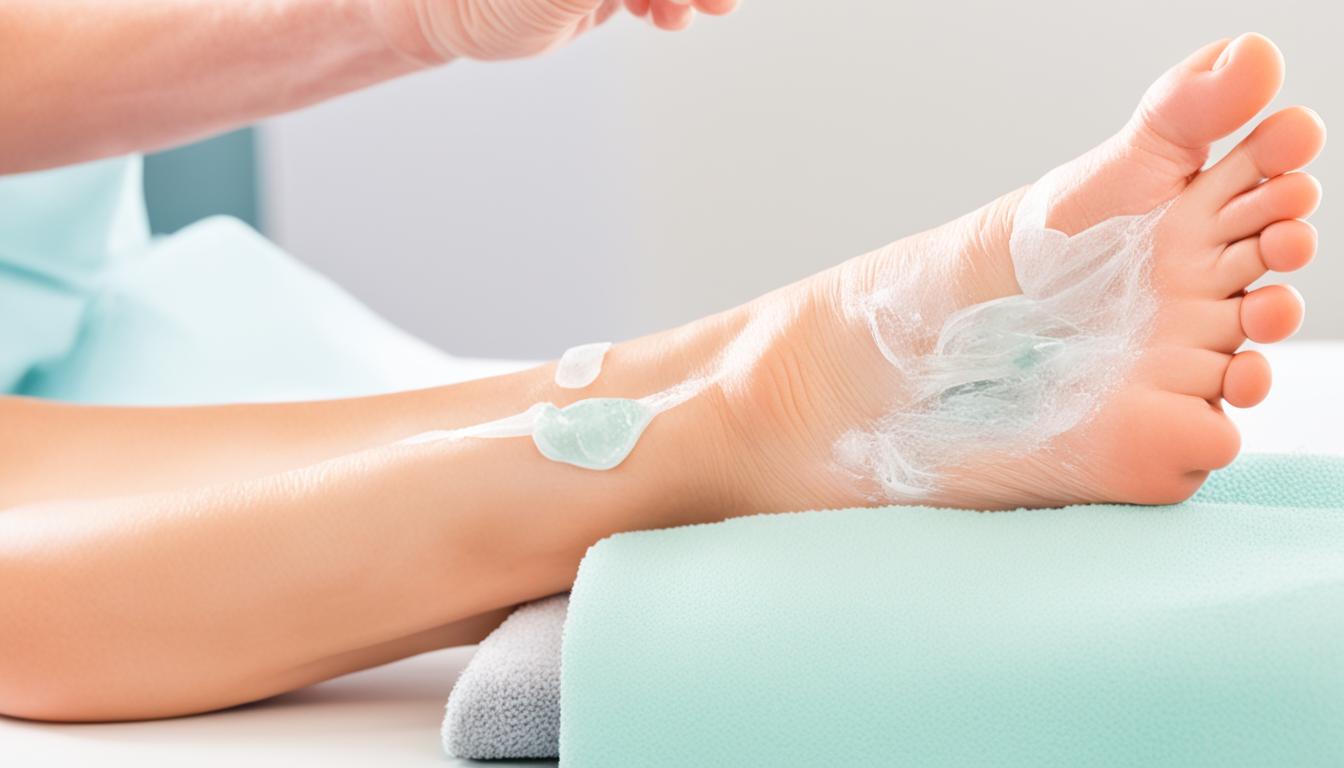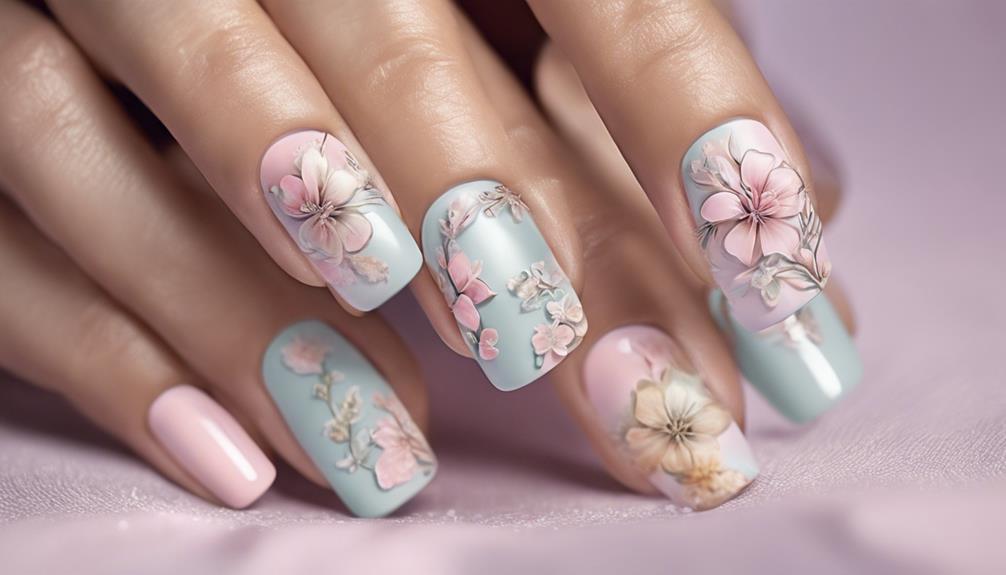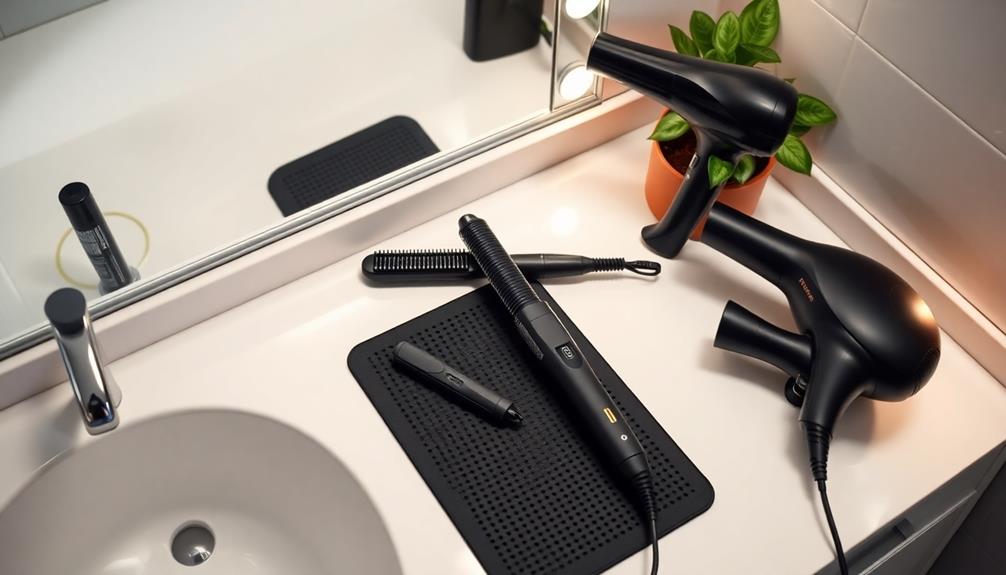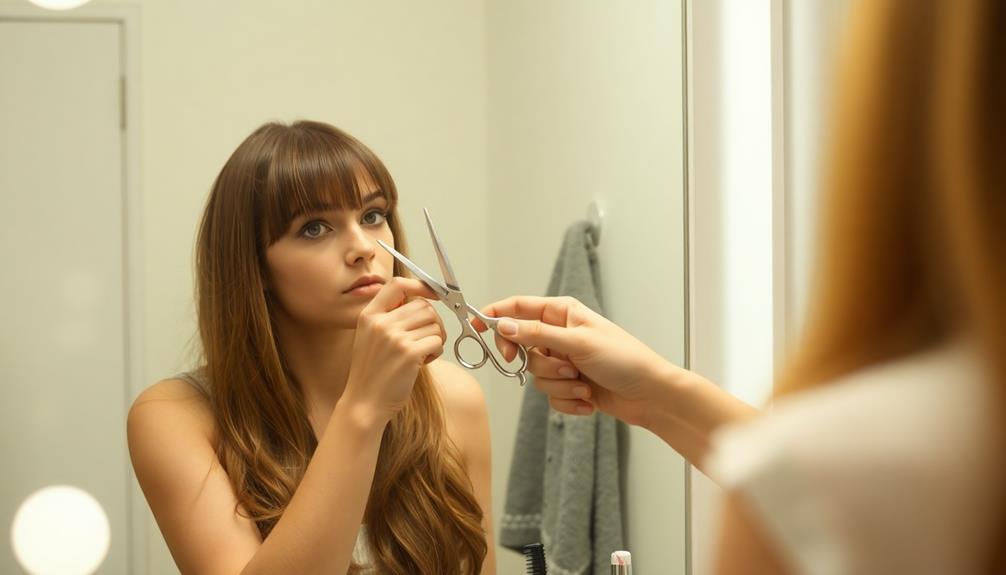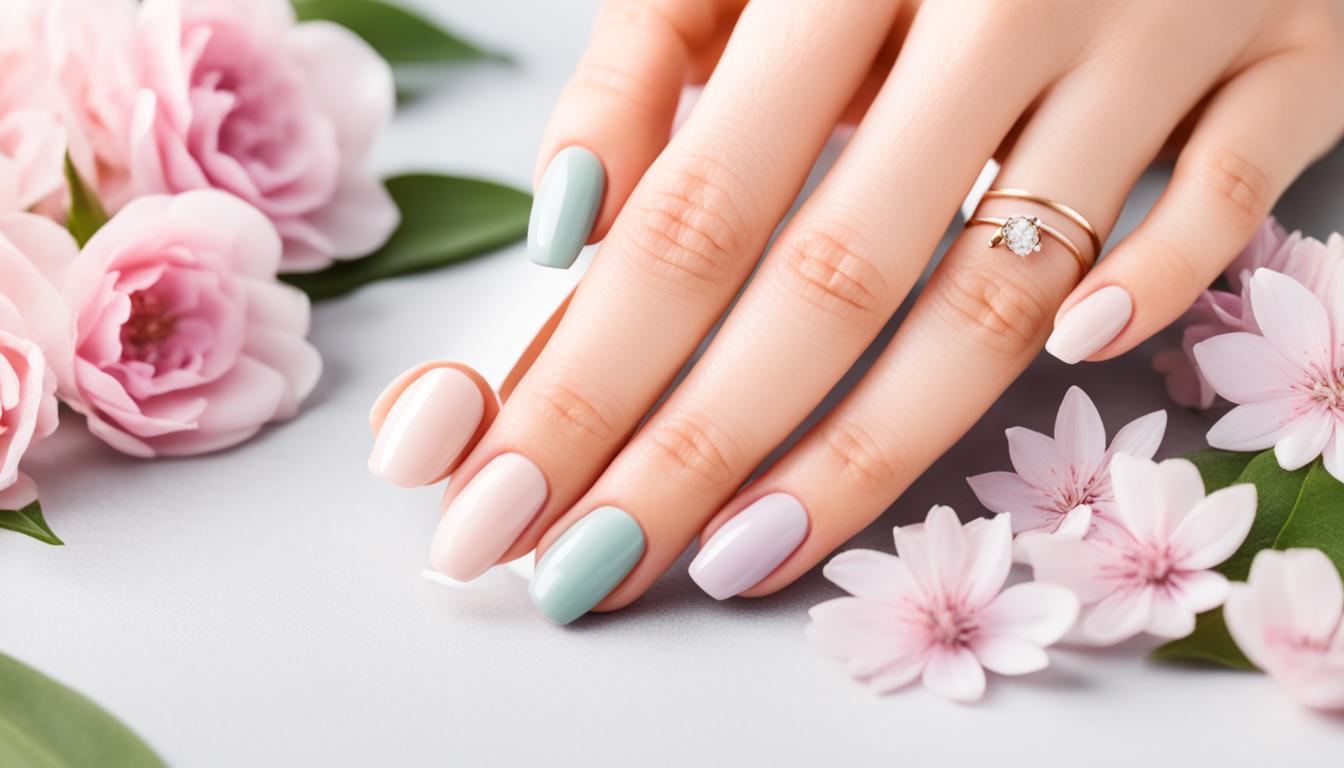Did you know that almost 30% of adults in the United States suffer from calluses and cracked heels? These common foot problems can cause discomfort and, if not properly taken care of, can lead to more serious complications. At Nightingale Studio, we understand the inconvenience that cracked heels can cause in your daily life and are committed to providing an effective solution. Our specialized Callus & Cracked Heels Treatment is designed to offer relief and rejuvenation for your feet, ensuring they become healthy, soft, and smooth.
With the guidance of experts like Dr. Lawrence E. Gibson from Mayo Clinic, we have compiled proven methods for effective at-home treatment. Let us show you how to say goodbye to dryness and discomfort effortlessly.
Key Takeaways:
- Calluses and cracked heels affect nearly 30% of adults in the United States.
- These foot problems can cause discomfort and lead to more serious issues if left untreated.
- Our Callus & Cracked Heels Treatment is designed to soothe and heal your feet.
- Expert guidance from professionals like Dr. Lawrence E. Gibson ensures effective at-home treatment.
- Say goodbye to dryness and discomfort with our proven methods for softer, smoother feet.
Understanding Cracked Heels
Cracked heels, also known as heel fissures, are a common foot problem that can cause discomfort and annoyance. This condition occurs when the thick skin on the bottom of your heels becomes dry and hard, forming cracks and splits. If left untreated, these cracks can deepen, leading to pain and potential infections.
Cracked heels can be easily recognized by their appearance of dry and thickened skin, often accompanied by noticeable vertical or horizontal cracks. These cracks can range in severity, from superficial fissures to deep crevices that may bleed or cause significant pain.
The main culprit behind cracked heels is thick skin, which is often caused by factors such as excessive pressure on the feet, walking barefoot, or wearing unsupportive footwear. Dry and dehydrated skin, especially during colder months or in individuals with certain medical conditions, can exacerbate the problem, making it even more difficult to treat.
While cracked heels may seem like a mere cosmetic concern, they can actually lead to more serious complications if left untreated. Cracks in the skin provide an entry point for bacteria and fungi, increasing the risk of infections such as cellulitis or athlete’s foot. Additionally, deep and painful cracks can make walking or standing uncomfortable, impacting daily activities and quality of life.
Causes and Risk Factors
Several factors contribute to the development of cracked heels. These include:
- Prolonged standing or walking
- Wearing poorly fitting or unsupportive footwear
- Frequent exposure to water, especially hot water
- Walking barefoot or on hard surfaces
- Obesity, which increases pressure on the feet
- Having dry skin or certain medical conditions such as diabetes or thyroid disorders
It’s important to be aware of these potential causes and risk factors in order to prevent and effectively manage cracked heels. By addressing the underlying issues, you can improve the health and appearance of your feet.
“Cracked heels can be easily recognized by their appearance of dry and thickened skin, often accompanied by noticeable vertical or horizontal cracks.”
Symptoms of Cracked Heels
The symptoms of cracked heels can vary depending on the severity of the condition. Common signs and symptoms include:
- Dry, callused skin on the heels
- Visible cracks or fissures
- Pain or discomfort, particularly while walking or standing
- Itching or a stinging sensation
- Bleeding from deeper cracks
- Flaky or peeling skin
- In severe cases, redness, swelling, or signs of infection
If you experience any of these symptoms, it’s important to seek prompt treatment to prevent further complications and discomfort.
Stay tuned for the next section, where we will discuss effective treatment options for cracked heels at home.
Causes and Risk Factors
Cracked heels can be caused by several factors and understanding these risk factors is essential for effective treatment.
Prolonged standing, wearing unsupportive footwear, and walking barefoot are common causes of cracked heels. These activities put excessive pressure on the fat pads under the heels, leading to the development of calluses and eventually cracking of the skin.
Obesity is also a risk factor for cracked heels. The extra weight puts additional strain on the heels, increasing the likelihood of developing calluses and cracks.
Another contributing factor is dry skin. When the skin loses moisture, it becomes less elastic and more prone to cracking. Some people naturally have drier skin, making them more susceptible to developing cracked heels.
In addition, certain chronic conditions such as diabetes can affect the skin’s ability to heal properly, making individuals with diabetes more prone to developing cracked heels.
The formation of calluses is often the first sign of cracked heels. When the skin on the heels becomes thickened and hardened due to pressure, it can eventually crack if not properly treated.
It’s important to address these causes and risk factors to prevent and manage cracked heels effectively. By taking proactive measures and seeking appropriate treatment, you can maintain the health and comfort of your feet.
Symptoms of Cracked Heels
Cracked heels are characterized by visible signs of dry and cracked skin on the heels, but the symptoms extend beyond just the appearance. Individuals suffering from cracked heels may experience:
- Pain and discomfort: Cracks in the heels can cause pain, especially while standing or walking.
- Itching: The dryness of the skin can lead to itching, causing further irritation.
- Bleeding from the cracks: In severe cases, the cracks may bleed, causing additional discomfort and potential infection.
- Flaky skin: The dry and damaged skin on the heels can lead to flakiness, adding to the unsightly appearance.
In some severe cases, warmth, redness, and swelling may be present, indicating the possibility of an infection. It is crucial to address these symptoms promptly for quick relief and prevention of further complications.

Treating Cracked Heels at Home
When it comes to cracked heels, taking care of them at home can be a simple and effective solution. By following a few easy steps, you can restore moisture to your feet and promote healing.
Moisturizing
Regular moisturizing is key to treating cracked heels. Apply a thick cream or petroleum jelly to your heels daily, focusing on the dry and cracked areas. This helps to lock in moisture and soften the skin, allowing it to heal.
Soaking Feet
Soaking your feet in plain or soapy water can provide additional relief for cracked heels. Fill a basin or tub with warm water and soak your feet for around 15 minutes. You can also add a few drops of essential oils for a relaxing experience.
Foot Scrubber
Gentle exfoliation using a foot scrubber can help remove dead skin cells and promote faster healing. After soaking your feet, use a foot scrubber or a pumice stone to gently scrub the affected areas. Remember to be gentle to avoid further irritation or damage to the skin.
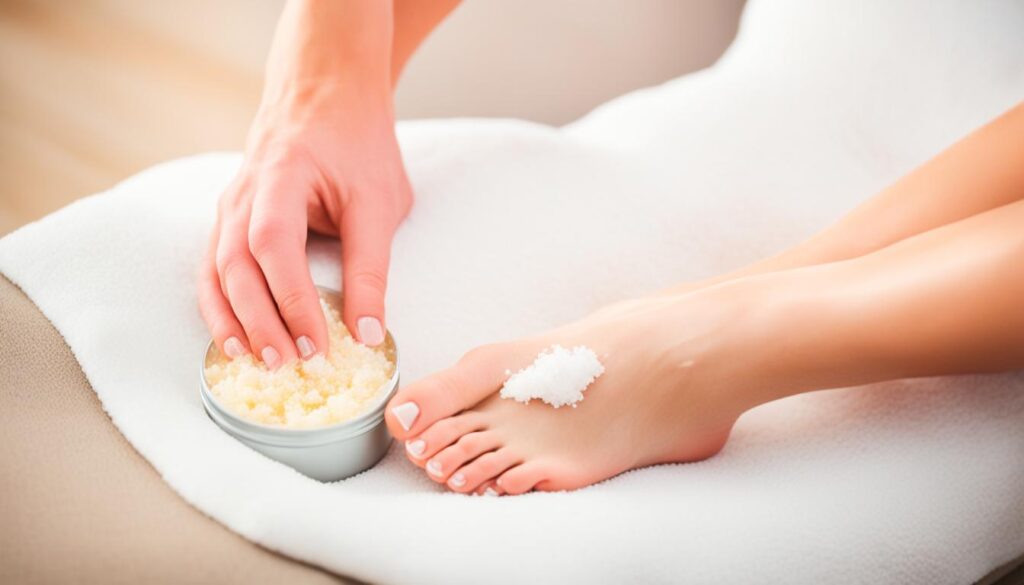
After exfoliating, rinse your feet and pat them dry with a soft towel.
Moisturize Before Bed
Before going to bed, apply moisturizer once again to your feet. This ensures that your skin stays hydrated throughout the night and aids in the healing process.
Consistency is key when treating cracked heels at home. Make these steps a part of your regular foot care routine to prevent further complications and promote healthy, rejuvenated feet.
Professional Treatment Options
If home remedies don’t provide sufficient relief for your cracked heels, seeking professional treatment from a podiatrist is your next step. At Nightingale Studio our experienced podiatrists can offer a range of specialized treatments to effectively address your cracked heels and restore the health of your feet.
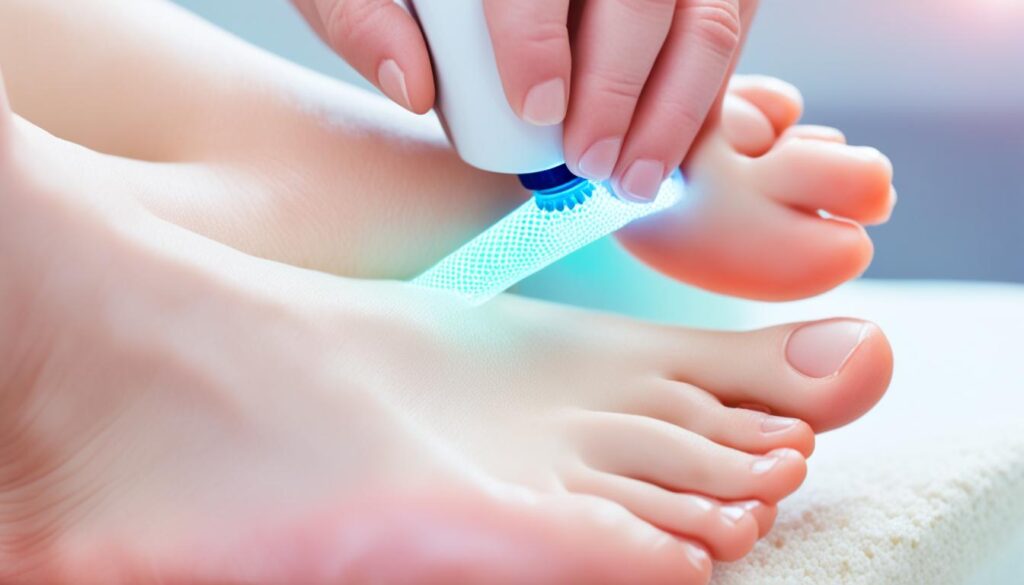
Mechanical Debridement for Excessive Skin Buildup
In cases where your heels have severe skin buildup, our podiatrists may recommend mechanical debridement. This procedure involves carefully removing the thick and hardened skin using professional tools, ensuring a safe and thorough elimination of the excess skin.
Prescription Dermal Foot Balm with Urea
To enhance the effectiveness of your cracked heel treatment, our podiatrists may prescribe a dermal foot balm containing urea. Urea is a powerful moisturizing agent that helps soften and hydrate the skin, promoting healing and preventing further dryness and cracking.
Appropriate Footwear Recommendations
Your choice of footwear plays a crucial role in the treatment of cracked heels. Our podiatrists can provide personalized recommendations for supportive footwear that minimize pressure on your heels, reduce friction, and promote optimal healing.
Utilization of Bandages or Dressings
To reduce excessive movement of the cracked skin, our podiatrists may utilize bandages or dressings. These protective measures help secure the skin, prevent further splitting, and create an optimal environment for healing.
Prescription Medication and Surgical Interventions
In severe cases where other treatments have not been successful, our podiatrists may explore prescription medication options or surgical interventions. These options will be discussed thoroughly with you, taking into account your individual circumstances and medical history.
When you come to Nightingale Studio, you can expect comprehensive and personalized professional treatment for your cracked heels. Our expert podiatrists will assess your condition, create a customized treatment plan, and guide you through the healing process, ensuring your comfort and well-being every step of the way.
Preventing Cracked Heels
Prevention is key when it comes to avoiding cracked heels. By implementing simple daily habits, you can maintain the health and softness of your feet. Let’s explore some effective preventive measures:
1. Daily Moisturization
Keep your heels moisturized by applying a thick moisturizer regularly. This helps to lock in moisture and prevent dryness, reducing the risk of cracked skin. Look for moisturizers specifically formulated for the feet, containing ingredients like shea butter or urea, which have excellent moisturizing properties.
2. Supportive Footwear
Choose footwear that provides adequate support and cushioning to prevent excessive pressure on your heels. Avoid shoes with thin soles or high heels, as they can exacerbate dryness and contribute to cracked heels. Opt for comfortable shoes that fit well and allow your feet to breathe.
3. Daily Foot Inspection
Regularly inspect your feet for any early signs of cracks or dryness. By catching the problem early, you can take proactive measures to prevent it from escalating. Take a few minutes each day to examine your feet, paying close attention to the heels and other areas prone to dryness.
4. Avoid Prolonged Standing
Standing for extended periods can strain your feet and contribute to the development of cracked heels. Whenever possible, take breaks and elevate your feet to reduce the pressure. If your job requires prolonged standing, try to shift your weight and wear supportive footwear to minimize the impact on your heels.
5. Stay Hydrated
Hydration plays a crucial role in maintaining healthy skin, including the skin on your feet. Drink plenty of water throughout the day to keep your body hydrated from within. This helps to moisturize your skin, reducing the risk of dryness and cracks.
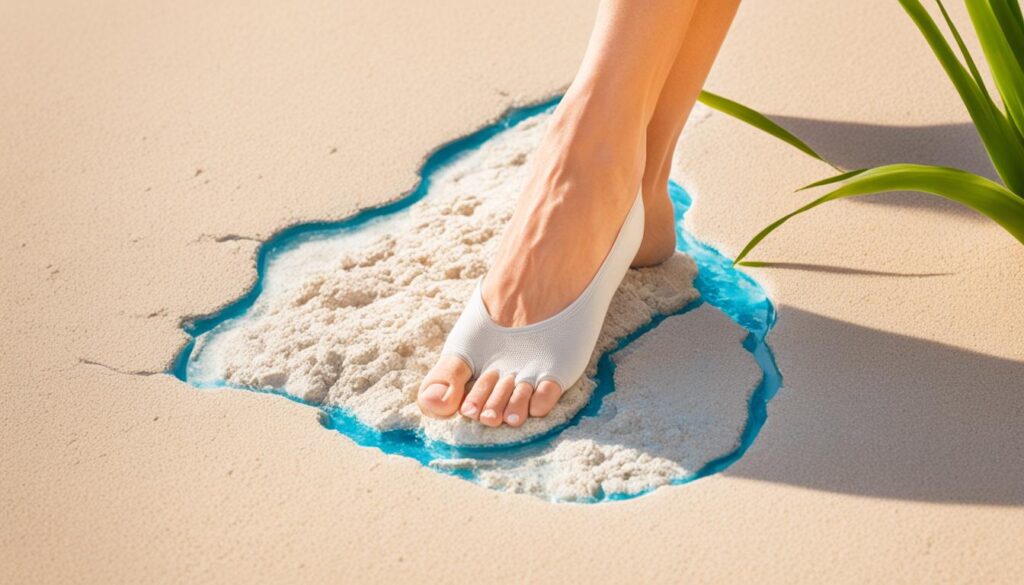
By implementing these preventive measures, you can significantly reduce the chances of developing cracked heels. Remember, taking care of your feet is essential for overall foot health and comfort.
Why Consult a Podiatrist
If moisturizing alone doesn’t resolve your cracked heels, it’s advisable to consult a podiatrist for a personalized treatment plan. At Nightingale Studio, our experienced podiatrists are dedicated to providing you with the best care for your foot concerns.
A podiatrist can perform mechanical debridement, a safe and effective procedure to remove the thick skin on your heels. This process helps to alleviate pain and discomfort while promoting healing. Through mechanical debridement, our skilled podiatrists gently remove the layers of dead skin, revealing healthier, softer skin underneath.
| Benefits of Consulting a Podiatrist |
|---|
| Personalized Treatment Plan |
| Expert Assessment of Severity |
| Specialized Treatment Options |
| Professional Advice on Prevention |
By visiting our podiatrists, you can be confident in receiving a personalized treatment plan tailored to your specific needs. They will thoroughly assess the severity of your condition and recommend appropriate treatment options. Whether it’s prescribing medicated creams, suggesting lifestyle modifications, or providing specialized footcare guidance, our podiatrists are here to support you on your journey to healthier, smoother feet.
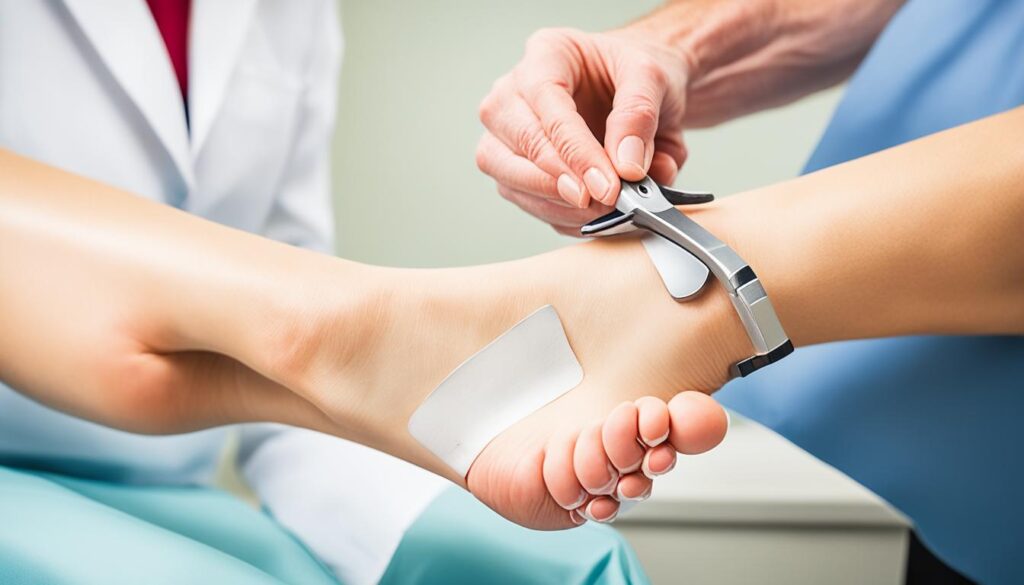
Additionally, consulting a podiatrist can offer valuable advice on preventing the recurrence of cracked heels. Our experts can guide you on proper footwear, footcare routines, and other preventive measures that can help keep your heels soft and supple. We understand that each person’s needs are unique, and our podiatrists are dedicated to delivering individualized care for optimal results.
Take the first step towards healthier, more comfortable feet by scheduling a consultation with one of our podiatrists today. Our friendly team is here to listen to your concerns and provide you with the expert care you deserve. Don’t let cracked heels hold you back – let us help you put your best foot forward!
Importance of Daily Foot Care
At Our Callus & Cracked Heels Treatment, we understand the significance of daily foot care in maintaining healthy feet. By following a regular foot care routine, you can prevent complications and catch any issues early, ensuring optimal foot health.
Inspecting Your Feet
Start by inspecting your feet daily for any signs of problems. Look out for cracks, redness, swelling, or any changes in skin color. Early detection of issues such as infections or ingrown toenails allows for prompt treatment, preventing them from becoming more severe.
Washing Feet and Drying Thoroughly
Another essential aspect of daily foot care is washing your feet with warm water and mild soap. Pay special attention to cleaning between the toes, as this area is prone to fungal infections. After washing, ensure thorough drying, as moisture can contribute to the development of various foot conditions.
Proper Nail Trimming
Trimming your toenails correctly is crucial for foot health. Use proper nail clippers and trim them straight across, avoiding rounded edges. This helps prevent ingrown toenails, which can be painful and susceptible to infection. If you have difficulty trimming your nails or any underlying nail concerns, consult a podiatrist for professional guidance.
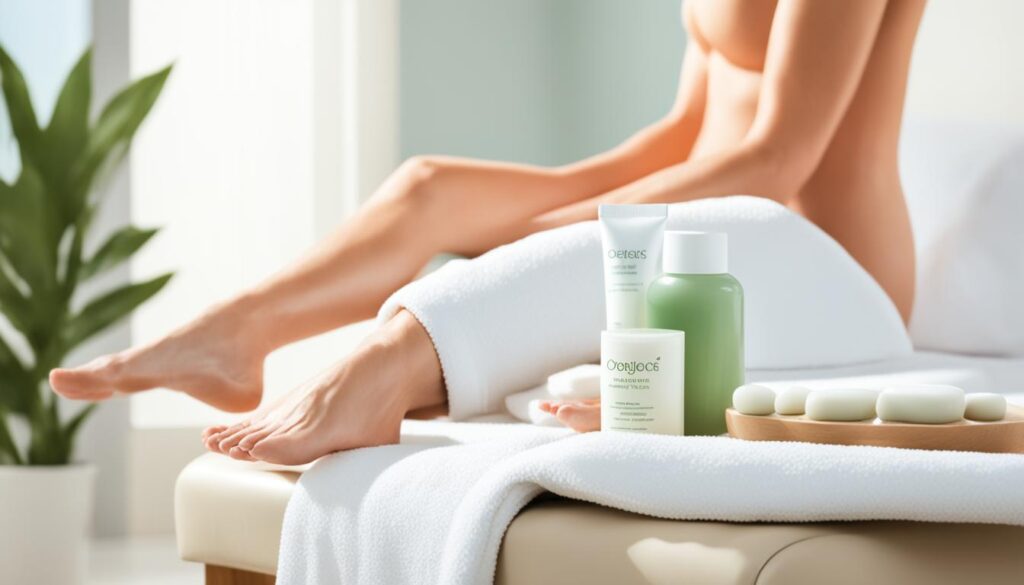
By incorporating these practices into your daily routine, you can promote healthy feet and avoid the discomfort of cracked heels or other foot problems.
Tips for Foot Care at Home
At Nightingale Studio, we believe that taking care of your feet at home is just as important as seeking professional treatment. Here are some essential foot care tips to keep your feet healthy and prevent common foot problems:
- Wear Supportive Footwear: Choosing the right footwear is crucial for foot health. Opt for shoes that provide proper arch support and cushioning to prevent strain on your feet. Avoid high heels or shoes with narrow toe boxes, as they can lead to discomfort and foot conditions like bunions.
- Avoid Walking Barefoot: Walking barefoot exposes your feet to various risks, including cuts, infections, and plantar warts. Make sure to wear shoes or sandals, even indoors, to protect your feet and maintain good hygiene.
- Protect Your Feet from Temperature Extremes: Extreme temperatures can have a negative impact on your feet. During hot weather, avoid exposing your feet to direct sunlight for prolonged periods and use sunscreen on exposed areas. In cold weather, wear warm socks and insulated shoes to keep your feet protected from the cold and prevent frostbite.
- Stay Hydrated: Proper hydration is essential for overall health, including foot health. Drinking plenty of water helps maintain skin elasticity and prevents dryness, which can lead to cracked heels and other foot issues. Aim for at least eight glasses of water per day.
By following these foot care tips at home, you can ensure the well-being of your feet and reduce the risk of discomfort and foot problems.
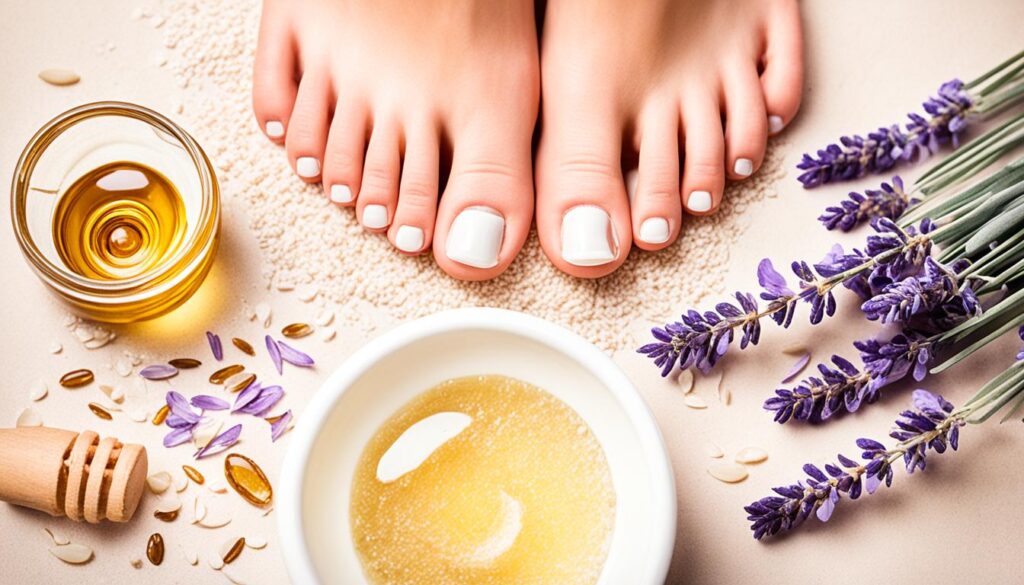
Treatment for Cracked Heels FAQ
If home remedies aren’t effective, you may have questions about professional treatment options for cracked heels. Here are some frequently asked questions to help you understand your options:
-
- Are orthotics necessary for treating cracked heels?
Orthotics, or shoe inserts, can be beneficial for individuals with underlying foot conditions that contribute to cracked heels. A podiatrist can assess your specific needs and recommend orthotics if necessary.
-
- Can I use liquid bandages for minor heel cracks?
Liquid bandages can provide temporary relief and protection for minor heel cracks. However, it’s important to consult a podiatrist for proper evaluation and guidance on the best treatment approach for your specific situation.
-
- What are some pain relief methods for cracked heels?
Pain relief options for cracked heels may include applying moisturizing creams or lotions, using over-the-counter pain relievers, and avoiding activities that worsen the pain. It’s advisable to consult a healthcare professional for personalized recommendations.
-
- How severe can the pain be in cracked heels?
The severity of pain in cracked heels can vary. Mild cases may cause discomfort while standing or walking, while severe cases can result in significant pain and even difficulty in performing daily activities. Seeking professional guidance can help determine the severity of your condition and appropriate treatment options.
Consulting a podiatrist is recommended for a comprehensive evaluation and tailored treatment plan that addresses your specific concerns and helps alleviate cracked heel symptoms.
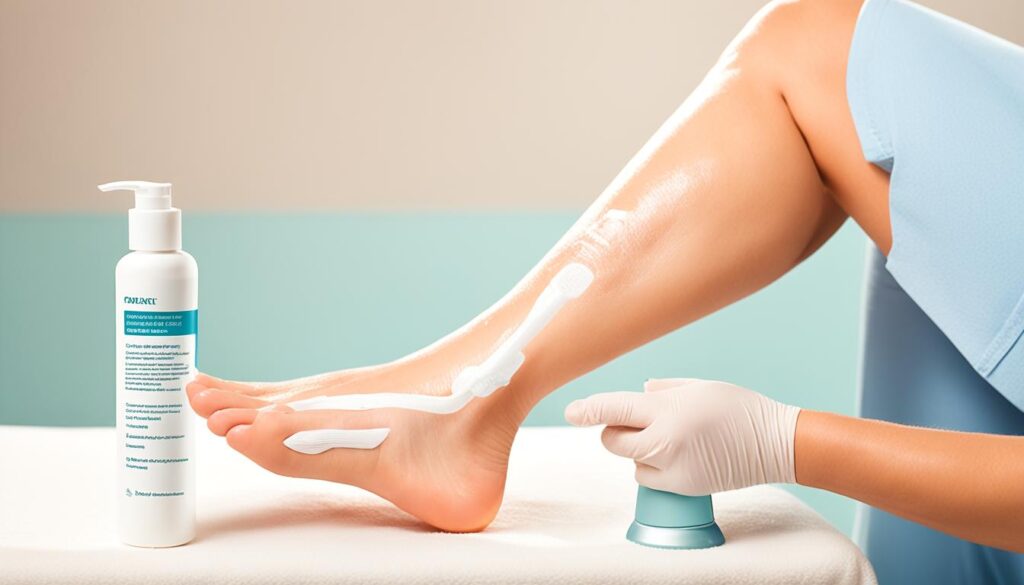
Relieving Tension in Your Feet
Tension in the feet can contribute to discomfort and pain. Incorporating relaxation techniques, such as foot massages, stretching exercises, and soaking in warm water, can help relieve tension and promote foot health. Taking time to relax and care for your feet can improve overall wellbeing.
When it comes to relieving tension in your feet, there are several effective methods you can try:
- Foot Massages: Massage can help relax the muscles in your feet and improve circulation. You can use your hands, a massage ball, or a foot roller to massage your soles, arches, and heels. Apply gentle pressure and focus on any areas of tension.
- Stretching Exercises: Stretching your feet can release tension and increase flexibility. Try exercises like toe curls, ankle rotations, and calf stretches. These exercises can be done easily at home or even while sitting at your desk.
- Soaking in Warm Water: Soaking your feet in warm water can provide immediate relief for tired and tense feet. Add some Epsom salt or essential oils to enhance the relaxation experience. Aim for a 15-20 minute soak to allow the warmth to penetrate your muscles.
By incorporating these relaxation techniques into your routine, you can effectively relieve tension in your feet and promote muscle relaxation. Taking care of your feet is crucial for maintaining overall foot health and preventing discomfort.
Benefits of Foot Exercises
Regular foot exercises not only help relieve tension but also provide several additional benefits. Some of the benefits of incorporating foot exercises into your daily routine include:
- Strengthening the muscles in your feet and lower legs.
- Improving balance and stability.
- Enhancing flexibility and range of motion.
- Reducing the risk of foot and ankle injuries.
- Alleviating foot pain and discomfort caused by conditions like plantar fasciitis and flat feet.
By engaging in foot exercises regularly, you can keep your feet strong, flexible, and healthy. Remember to start slowly and gradually increase the intensity and duration of your exercises to avoid overexertion.
So, the next time you feel tension building up in your feet, take a moment to give them the care they deserve. Whether it’s through a soothing foot massage, gentle stretches, or a relaxing soak, relieving tension in your feet can have a significant impact on your overall well-being.
| Relaxation Technique | Benefits |
|---|---|
| Foot Massages | Relieves muscle tension Improves circulation Enhances relaxation |
| Stretching Exercises | Increases flexibility Stimulates blood flow Improves foot function |
| Soaking in Warm Water | Relaxes muscles and joints Softens the skin Reduces inflammation |

Orthotics in Foot Treatment
Orthotics are specialized devices that can be highly beneficial in the treatment of various foot and lower limb conditions. They offer effective pain relief and significantly improve overall comfort. While not everyone may require orthotics, they can be prescribed by a knowledgeable podiatrist based on individual needs. Orthotics provide essential support to the feet, correcting alignment issues and alleviating pressure on specific areas.
Whether you are suffering from arch pain, plantar fasciitis, flat feet, or other foot conditions, orthotics can play a crucial role in your treatment plan. By providing proper alignment and support, orthotics help reduce strain on the feet, relieve pain, and improve overall functionality. They work by providing structural support to the feet, promoting proper distribution of weight and reducing excessive stress on vulnerable areas.
Orthotics come in various forms, ranging from shoe inserts and insoles to custom-made devices tailored to the specific needs of the individual. Depending on your condition and requirements, your podiatrist may recommend over-the-counter orthotics or design a custom orthotic based on a detailed analysis of your foot structure and gait.
Choosing the right orthotics for your foot treatment is essential to ensure optimal results. A skilled podiatrist will assess your foot condition, analyze your gait, and conduct a thorough examination to determine the most suitable type of orthotic for you. They will consider factors such as arch type, foot mechanics, and the specific condition you are experiencing.
Investing in orthotics can provide significant long-term benefits for foot and lower limb health. They not only alleviate pain and discomfort but also help prevent further progression of foot conditions and reduce the risk of related complications. By promoting proper foot alignment, orthotics can even improve balance and stability, enhancing overall mobility and functionality.
Benefits of Orthotics in Foot Treatment
Here are some key benefits of incorporating orthotics into your foot treatment:
- Effective pain relief for foot conditions
- Improved foot function and alignment
- Reduced pressure on vulnerable areas
- Enhanced stability and balance
- Prevention of further foot complications
- Increased comfort during daily activities
With the guidance of a qualified podiatrist, you can find the right orthotics to address your specific foot concerns and experience lasting pain relief and improved overall foot health.

Summer Foot Care Tips
During the summer months, it’s important to take extra care of your feet to prevent any issues that may arise from the hot weather and increased humidity. By following these simple tips, you can maintain healthy and happy feet all summer long.
Wear Breathable Shoes
Opt for shoes made from breathable materials like canvas or mesh to allow proper ventilation and prevent excessive sweating. This can help reduce the risk of fungal infections and unpleasant odors.
Keep Feet Clean and Dry
Wash your feet daily with mild soap and warm water to keep them clean and free from bacteria. After washing, make sure to dry your feet thoroughly, especially between the toes, as moisture can promote the growth of fungi.
Protect from Sunburn
Apply sunscreen to your exposed feet, including the tops and soles, to protect them from harmful UV rays. Don’t forget to reapply sunscreen throughout the day, especially if you’re spending a lot of time outdoors.
Stay Hydrated
Drink plenty of water to stay hydrated, as proper hydration helps maintain healthy skin and prevents dryness. Well-hydrated feet are less prone to cracks and other foot issues.
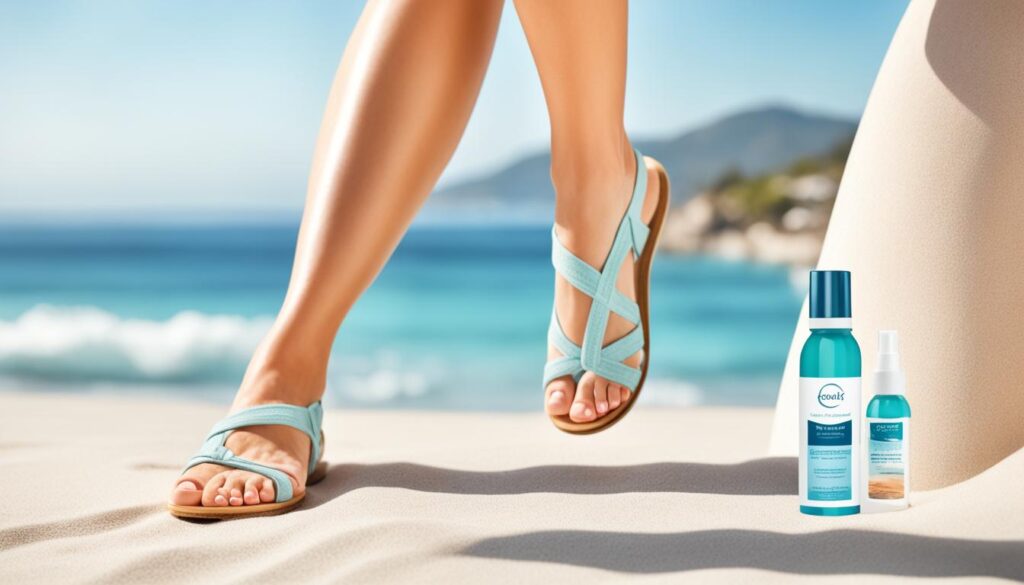
Conclusion
Proper foot care is essential for effectively managing cracked heels and maintaining overall foot health. By following the tips and treatment options discussed in this article, you can enjoy softened, smoother feet and say goodbye to the discomfort of dry, cracked skin.
Regular moisturization is key to keeping your feet healthy. Make it a habit to apply thick creams or petroleum jelly to hydrate and nourish your skin. Additionally, preventive measures such as wearing supportive footwear, inspecting your feet daily, and avoiding prolonged standing can help prevent the development of cracked heels.
However, if home remedies don’t provide sufficient relief, it’s crucial to seek professional treatment from a podiatrist. They can offer personalized advice, perform mechanical debridement to remove excessive skin buildup, and prescribe dermal foot balm with urea for added effectiveness. Remember, taking care of your feet contributes to your overall well-being, so prioritize foot care in your daily routine!
How Can I Combine Callus and Cracked Heel Treatment with Nail Extension Enhancement?
For those looking to get glamorous nails now, combining callus and cracked heel treatment with nail extension enhancement is the perfect way to achieve a beautiful, polished look. By addressing foot care and nail enhancement together, you can ensure that your entire appearance is on point and ready to shine.
FAQ
What are cracked heels?
Cracked heels, also known as heel fissures, occur when the thick skin on the bottom of your heels becomes dry and hard, leading to cracks and splits.
What causes cracked heels?
Cracked heels can be caused by factors such as prolonged standing, wearing unsupportive footwear, walking barefoot, obesity, taking long hot showers, and some chronic conditions like diabetes.
What are the symptoms of cracked heels?
Symptoms of cracked heels can include pain and discomfort, itching, bleeding from the cracks, flaky skin, and in severe cases, warmth, redness, and swelling indicating an infection.
How can I treat cracked heels at home?
At-home treatment for cracked heels includes regular moisturizing using thick creams or petroleum jelly, soaking your feet in plain or soapy water, gentle exfoliation using a foot scrubber, and moisturizing before going to bed.
When should I seek professional treatment for cracked heels?
If home remedies don’t provide sufficient relief, it may be necessary to seek professional treatment from a podiatrist. They may recommend mechanical debridement to remove excessive skin buildup, prescribe dermal foot balm with urea for added effectiveness, provide appropriate footwear, and utilize bandages or dressings to reduce skin movement.
How can I prevent cracked heels?
Preventing cracked heels involves daily moisturization using a thick moisturizer, wearing supportive footwear, inspecting your feet daily for early signs of cracks, avoiding prolonged standing, and staying hydrated by drinking plenty of water.
Why should I consult a podiatrist for cracked heels?
Consulting a podiatrist can provide a personalized treatment plan for your cracked heels. They can perform mechanical debridement to safely remove thick skin, assess the severity of the condition, and recommend appropriate treatment options.
How important is daily foot care?
Daily foot care is essential for maintaining healthy feet. It includes inspecting your feet for any signs of problems, washing them with warm water and drying them thoroughly, especially between the toes, and trimming your toenails straight across to prevent ingrown toenails.
What are some tips for foot care at home?
Tips for foot care at home include wearing supportive footwear, avoiding walking barefoot, protecting your feet from temperature extremes, using sunscreen on exposed areas, and staying hydrated by drinking plenty of water.
What are some professional treatment options for cracked heels?
Professional treatment options for cracked heels may include the use of orthotics, liquid bandages for minor heel cracks, pain relief methods, and addressing the severity of pain with appropriate interventions.
How can I relieve tension in my feet?
Incorporating relaxation techniques such as foot massages, stretching exercises, and soaking in warm water can help relieve tension in your feet and promote foot health.
What is the role of orthotics in foot treatment?
Orthotics can play an important role in treating various foot and lower limb conditions by providing pain relief and improving overall comfort. They support the feet, correct alignment issues, and alleviate pressure on specific areas.
How can I take care of my feet during the summer?
To maintain healthy feet during the summer, it’s important to wear breathable shoes, keep your feet clean and dry, protect them from sunburn, and stay hydrated.
